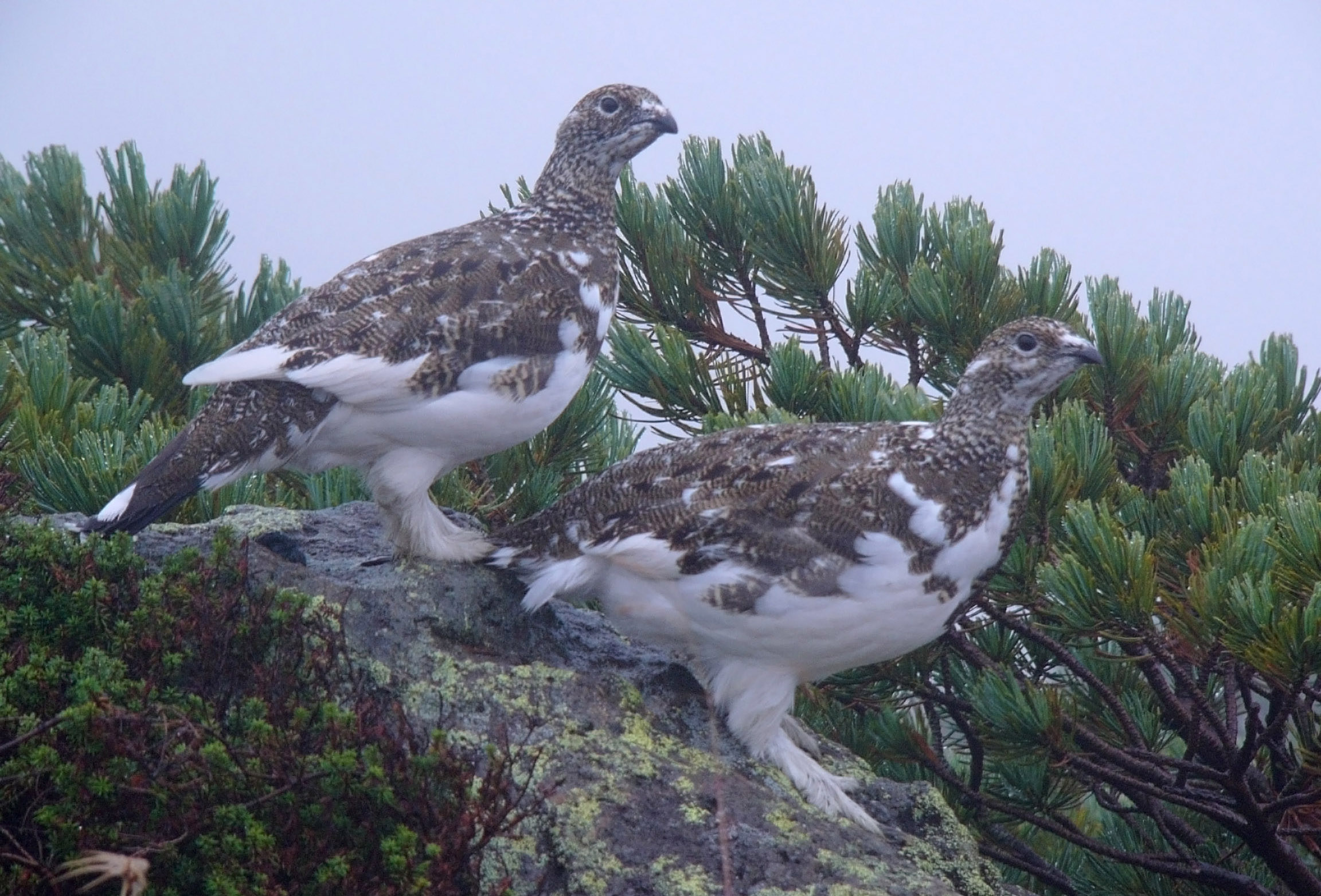| New Photos | Animal News | Animal Sounds | Animal Movies | Upload Photo | Copyright | Korean |
|---|
| Funny Animal Photos | Monsters in Animalia | Wiki Articles Fun Facts about Animals | Links | Home | Mobile A.P.A. |
|---|
| Image Info | Original File Name: Raichou_01-Japanese Rock Ptarmigan (Lagopus muta japonica).jpg Resolution: 2304x1563 File Size: 699944 Bytes Date: 2005:10:08 07:33:50 Camera: DMC-FZ10 (Panasonic) F number: f/2.8 Exposure: 10/800 sec Focal Length: 316/10 Upload Time: 2007:10:26 11:06:14 | |
| Author | Name (E-mail): Unknown | |
| Subject | Rock Ptarmigan (Lagopus muta) - Wiki | |
 |
| Email : E-Card | Poster | Web Master Delete Edit Info Admin |
| Description | Rock Ptarmigan (Lagopus muta) - Wiki
Ptarmigan
The Ptarmigan, Lagopus muta, is a medium-sized (31-35 cm or 12-14 inches) gamebird in the grouse family. It is known as Rock Ptarmigan, or colloquially Snow Chicken in North America, where it is the official bird for the territory of Nunavut, Canada. It is a sedentary species, breeding across arctic and subarctic Eurasia and North America (including Greenland) on rocky mountainsides and tundra. There are isolated populations in the mountains of Scotland, the Pyrenees, the Alps, Bulgaria, the Urals, the Pamir Mountains, the Altay Mountains and Japan. During the last ice age, the species was far more widespread in continental Europe (Tomek & Boche??ski 2005). The Ptarmigan is seasonally camouflaged; its feathers moult from white in winter to brown in spring or summer. Breeding males have greyish upper parts with white wings and underparts. In winter, plumage becomes completely white except for the black tail. They can be distinguished from the winter Willow Grouse (Willow Ptarmigan in North America) by habitat - Rock Ptarmigan prefer higher elevations and more barren habitat; they are also smaller in size with a more delicate bill. The male's "song" is a loud croaking. Ptarmigan feed primarily on birch and willow buds and catkins when available. They will also take various seeds, leaves, flowers and berries of other plant species. Insects are also taken by the developing young. Folklore In the mountains of Honsh??, Japan, the Ptarmigan is called raichou (literally "thunder bird") and according to legend protects people and buildings from fire and thunder. http://en.wikipedia.org/wiki/Ptarmigan
| |||
| Copyright Info | AnimmalPicturesArchive.com does not have the copyright for this image. This photograph or artwork is copyright by the photographer or the original artist. If you are to use this photograph, please contact the copyright owner or the poster. |
|
|
|
| |||||||
| CopyLeft © since 1995, Animal Pictures Archive. All rights may be reserved. | ||||||||
Stats